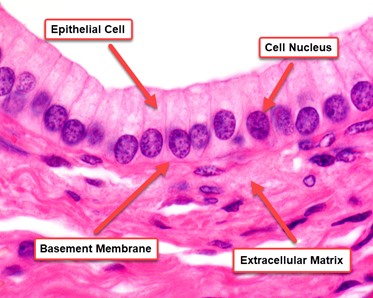I have been writing a lot recently about the commonality of tissue and cells and why we should be concentrating on the physiology of the tuning fork vibration rather than considering a specific frequency and fork for each cell, tissue, organ, gland, and system. If you look at the overall physiology of the body, there are only 4 main types of tissue: Connective, Epithelial, Nervous, and Muscle tissue. All other tissue are a part of these groups.
The term “tissue” could mean a grouping of cells or a product created by those cells. For example, connective tissue primarily consists of products created by their builder cells (fibroblasts for soft tissue, osteocytes for bones, and chondrocytes for cartilage). Keep in mind that a cell is able to make complex decisions and produce products for various reasons. That’s their main purpose. But the products they create are not necessarily capable of complex decisions and reacting in ways beyond their original purpose. Fascia collagen fibers are complex strands or chains of amino acids that are formed to create structures and respond to tension loads (a very simplified definition). The collagen fiber just responds to load demands, but it’s the builder cell fibroblasts that control when, where, and how much collagen should be in that particular area based on continuous load demands.
Out of the 4 types of tissue, both Connective and Epithelial tissue make of most of the body structures by volume. Both of these tissue types support each other at a very intimate relationship where one cannot survive without the other. Our focus in this post is to highlight the Epithelial cells that make up this tissue layer. It is the Epithelia that connects all parts of the body because these cells are the unsung heroes of the fascia that nobody talks about. They were essentially left out of the Fascia Ball where everyone now focuses on the generic term fascia when really it’s the epithelial cells who control the show with the support of connective tissue.
You can see in the image that an epithelial cell is a line of certain cells in different shapes that are connected together by a basement membrane which sits on top of an extracellular matrix (connective tissue). The epithelial cells do not have their own blood supply, so they get their nutrients and supplies from the supporting extracellular matrix.
Why am I making such a big deal about Epithelial Cells? Because their main purpose is to control the flow of fluids and provide a barrier functions of ALL vessels, membranes, organs, glands, nerves, and muscles. That’s right. Epithelial tissue are also present in the other two tissue types of nervous and muscle tissue. Understanding the importance of Epithelial Cells and their associated basement membranes is the true key to realizing how tuning fork vibration from one type of weighted tuning fork can affect the tissue in the exact same way as we have been reporting with our clinical results.
The science supports what we are doing, and I can show you the supporting information if you know where to look. Unfortunately, scientists in each specialty field have changed the names of certain epithelial cells to make things more confusing, but if you know the names you will find the common thread to this very important tissue. It is within this tissue that you will find the dysfunction for almost every known disease from cancer to MS. There is a lot to discuss here.


